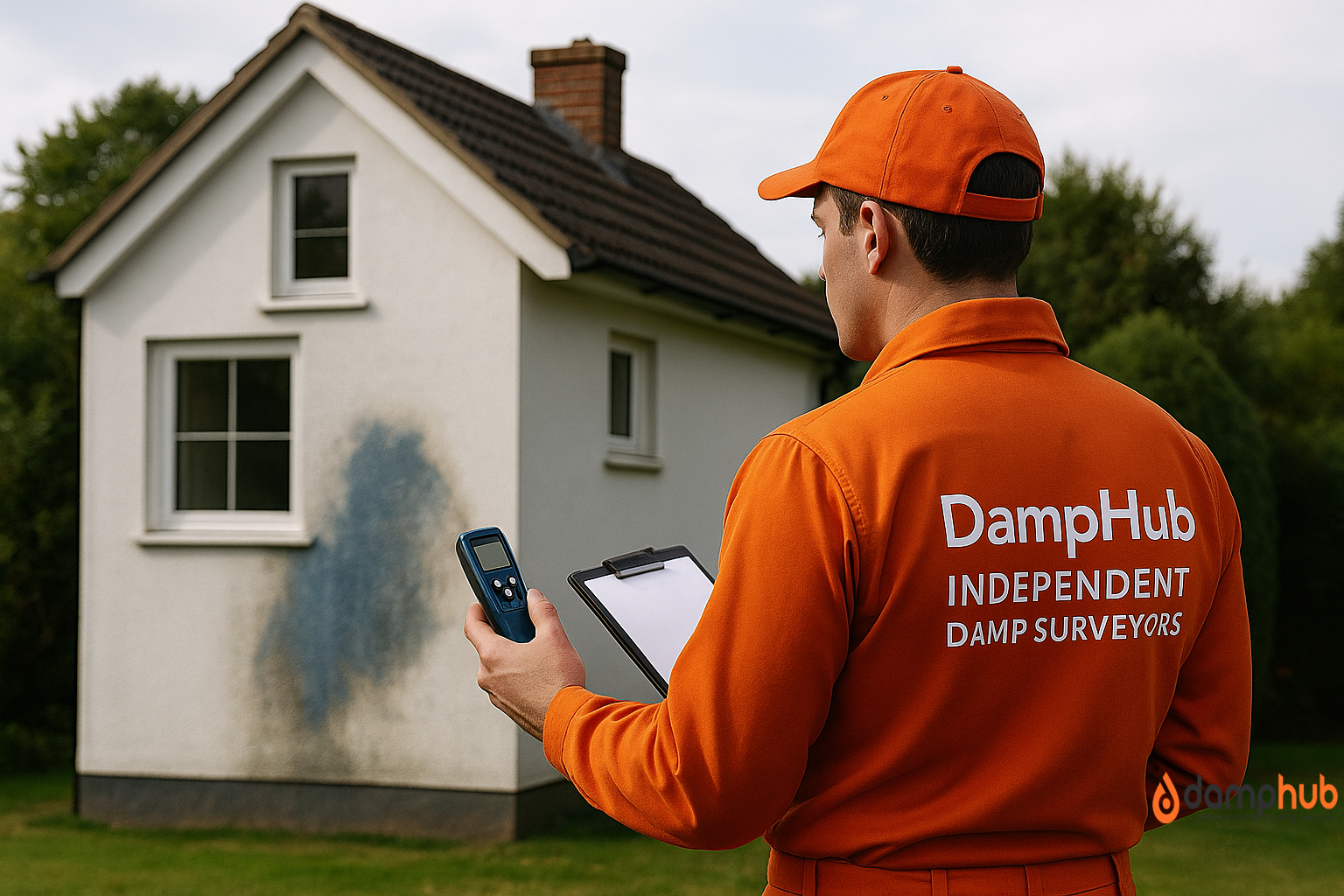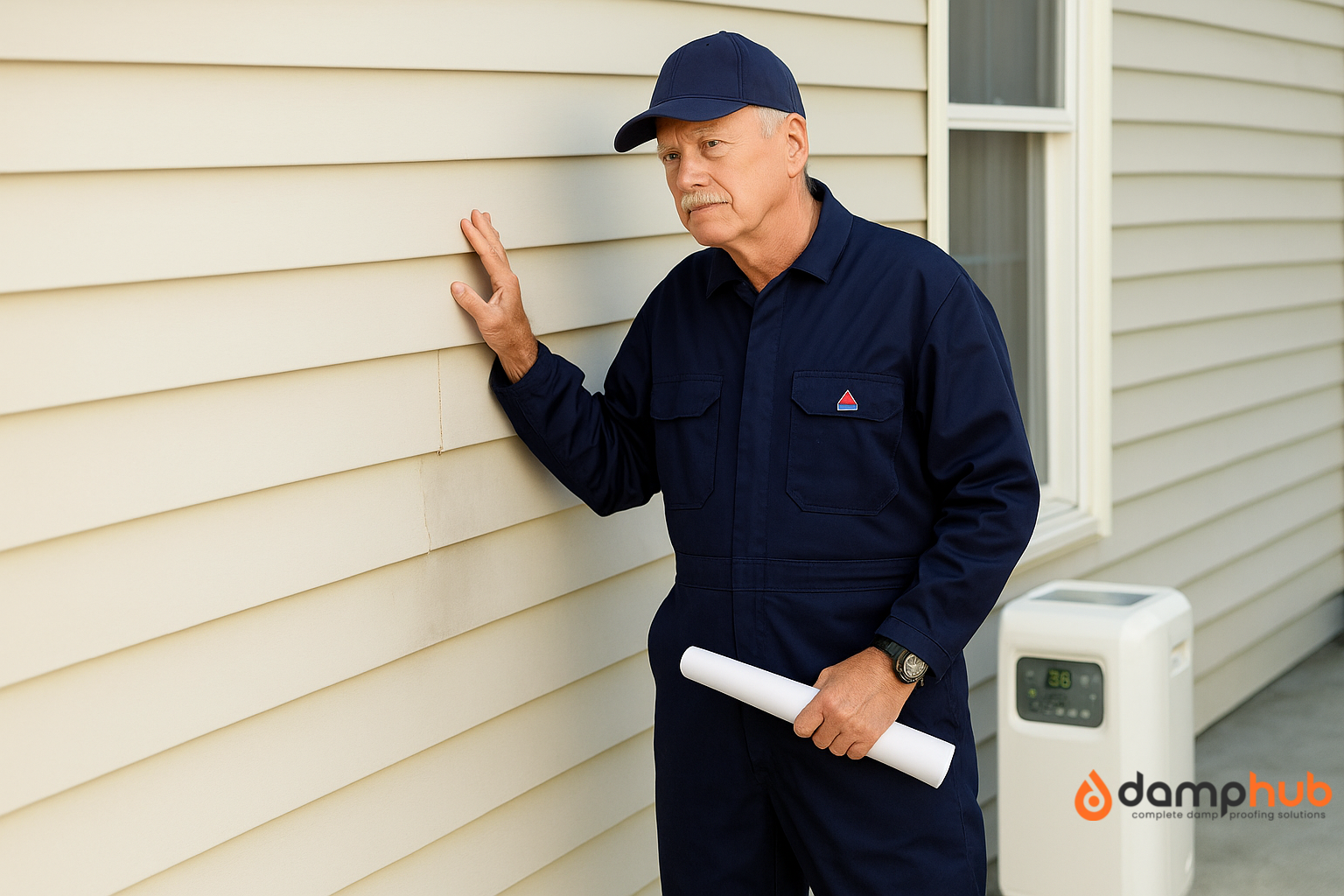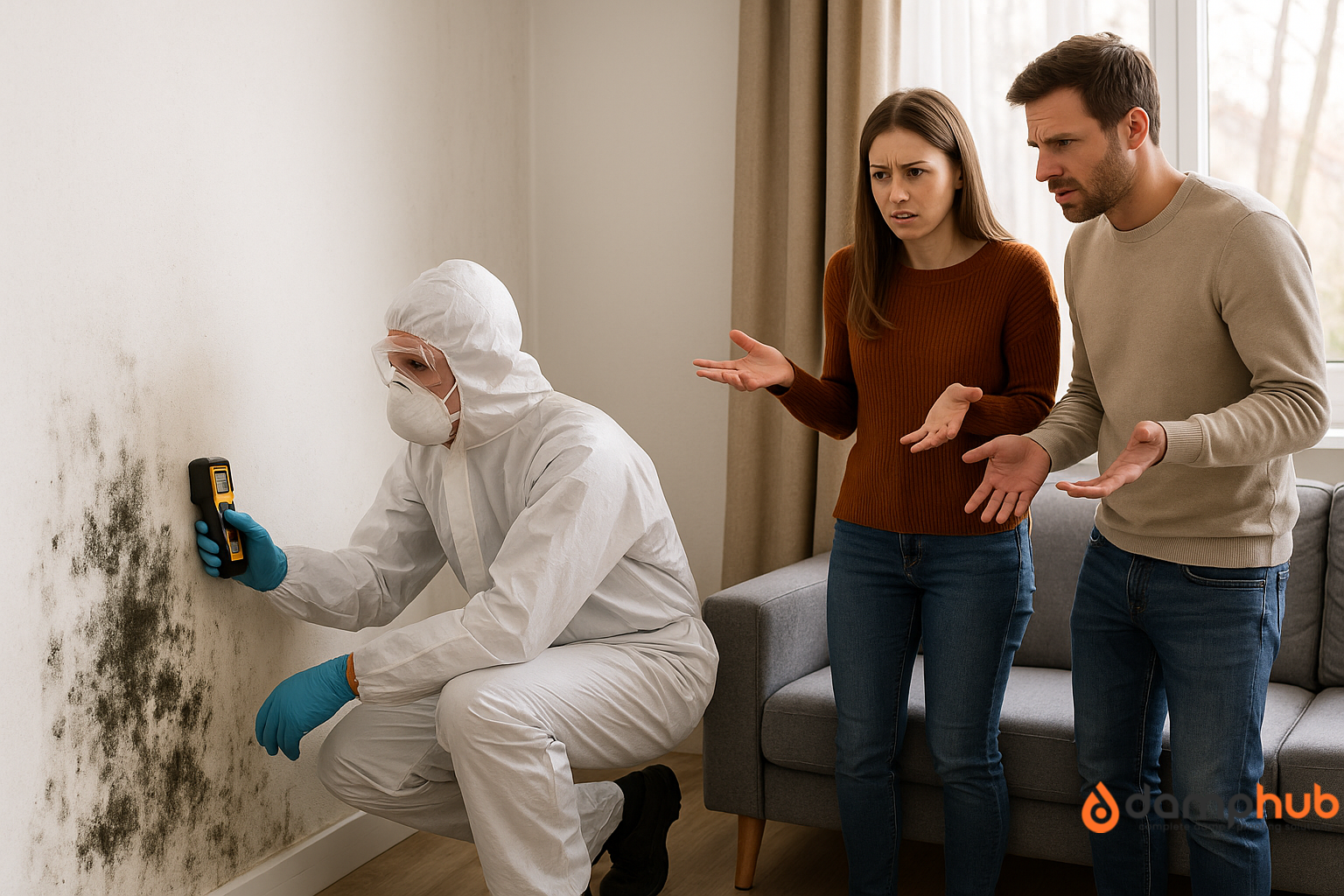
What do you do when you notice damp issues in your home?
For instance, musty smells, black spots, or crumbling plaster — or even just suspect a hidden issue?
The first thing that most of us think of is calling for a damp survey.
Now you start weighing between paid and free surveys, and end up wondering
Is it worth paying for a damp survey, even when some companies offer free inspections?
A fair question and one that could save you time, stress, and unnecessary costs if you get the right answer.
In this article, we’ll help you decide whether it’s worth paying for a damp survey or trusting the free deals you’re getting around.
Is It Worth Paying for a Damp Survey?
If you’re wondering whether a damp survey is worth it, the short answer is yes, especially when an impartial diagnosis is needed.
Many people make the mistake of relying on free surveys from damp-proofing companies.
These often result in sales quotes rather than genuine analysis.
Here’s why a professional, independent damp survey is worth paying for:
- Expert diagnosis, not sales pitches – Independent surveyors are not tied to remedial companies, so they offer unbiased advice.
- Avoids costly misdiagnosis – A correct diagnosis could save thousands by preventing unnecessary or ineffective treatment.
- Supports negotiations – A written report provides evidence for buyers to renegotiate or request repairs before exchanging contracts.
Protects property value – Left unresolved, damp can lead to structural problems, timber decay, and mould-related health concerns.
👉 Must read: What is included in a Damp Survey?
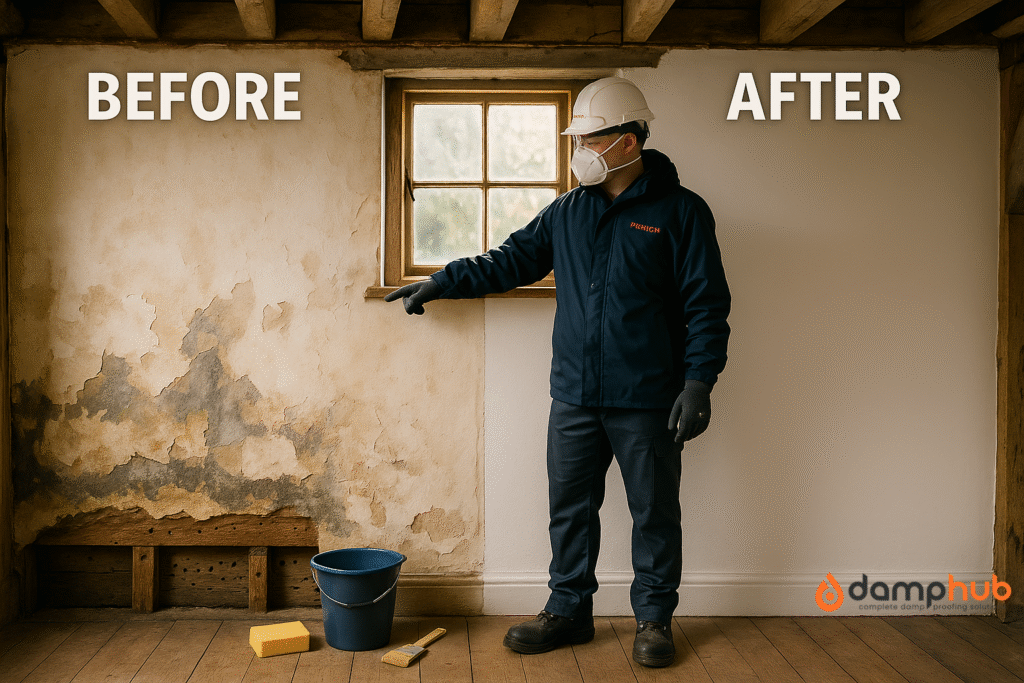
How Much Should a Damp Survey Cost?
So, how much should a damp survey cost? It depends on the size of the property and the complexity of the issue, but you can expect to pay:
- £150 to £400 for a standard independent damp survey
- £400+ for large properties or where legal or insurance reports are needed
Cheaper or “free” surveys are often carried out by contractors looking to sell damp proofing work, which may not always be necessary.
Independent surveys, on the other hand, are comprehensive and fact-based, giving you confidence in the findings.
Who Should Pay for a Damp Survey?
Paying for a damp survey may be relevant at different stages in the property lifecycle. Here’s a clear breakdown of who should pay — and why.
1. Buyers: To Avoid Nasty Surprises
If you’re buying a property and the homebuyer’s survey raises concerns, it’s wise to commission a specialist damp inspection.
Reasons buyers should pay:
- It confirms the presence and severity of damp issues
- It clarifies the cause, allowing appropriate remedies
- It provides leverage in price negotiations
- It offers peace of mind, especially with older or previously unoccupied homes
An independent survey ensures you’re not inheriting a hidden problem with significant repair costs.
2. Sellers: To Show Transparency and Avoid Delays
While it’s not mandatory, sellers increasingly choose to commission damp surveys before listing a property.
Why it’s worthwhile for sellers:
- Builds trust with potential buyers
- Prevents sales from falling through due to unexpected damp findings
- Allows issues to be addressed early, improving marketability
- Speeds up transactions by removing uncertainty
If a property has visible damp, is vacant, or has undergone recent renovations, it’s wise for the seller to act proactively.
3. Landlords and Property Managers: For Legal and Maintenance Reasons
Landlords have legal responsibilities under the Homes (Fitness for Human Habitation) Act to keep properties free of serious damp and mould.
A professional damp survey helps landlords to:
- Investigate tenant complaints
- Identify the causes of recurring condensation or mould
- Avoid disrepair claims
- Maintain the long-term health of the property
In rental settings, a damp survey isn’t just advisable — it may be necessary to fulfil your legal obligations.
👉 Must read: How Long Does a Damp Survey Take? A Step-by-Step Timeline
What Are the Signs That You Need a Damp Survey?
Not sure if you need a survey at all?
Some signs are obvious — others, much less so.
If any of these apply, it’s time to get things checked:
- Visible mould on walls, ceilings, or behind furniture
- Peeling paint or bubbling plaster
- Musty smells, especially in enclosed spaces like the understairs cupboards
- Discoloured patches, even if they’re dry to the touch
- Cold, damp-feeling walls, especially on external walls
- Condensation on windows, particularly in the mornings
- A history of leaks, floods, or past damp treatments
- A surveyor flagged damp during a homebuyer’s report

How do surveyors check for damp?
A proper damp survey doesn’t just confirm damp — it tells you what type, why it’s happening, and how to fix it properly.
Internal Checks
- Visual signs – Surveyors begin by examining walls, ceilings, and skirting boards for visible symptoms like staining, mould, flaking paint, warped woodwork, or damp patches.
- Moisture mapping – They take readings from different areas to detect high-moisture zones and establish how far the damp has spread.
- Salt testing – In cases where rising damp is suspected, samples of plaster may be tested for hygroscopic salts, which help differentiate between types of damp.
Ventilation review – Poor airflow is often a major factor in condensation-related damp. Surveyors will check for working extractor fans, trickle vents, and overall air circulation in key areas like bathrooms and kitchens.
👉 Must read: 10 Best Damp Proofing Specialists in Swindon UK
External Checks
- Building fabric – Outside, they inspect walls for cracks, defective render, missing pointing, or other signs of water ingress.
- Guttering and pipework – Leaking or overflowing gutters and downpipes are a common cause of damp. These are checked to ensure water is draining away properly.
Ground levels and drainage – If the ground outside sits higher than the internal floor level, or drainage is poor, moisture can seep in. Surveyors assess whether these conditions exist.
Together, these checks help to form a detailed picture — not just of where damp is, but why it’s happening. That diagnosis is what makes a professional damp survey so valuable.
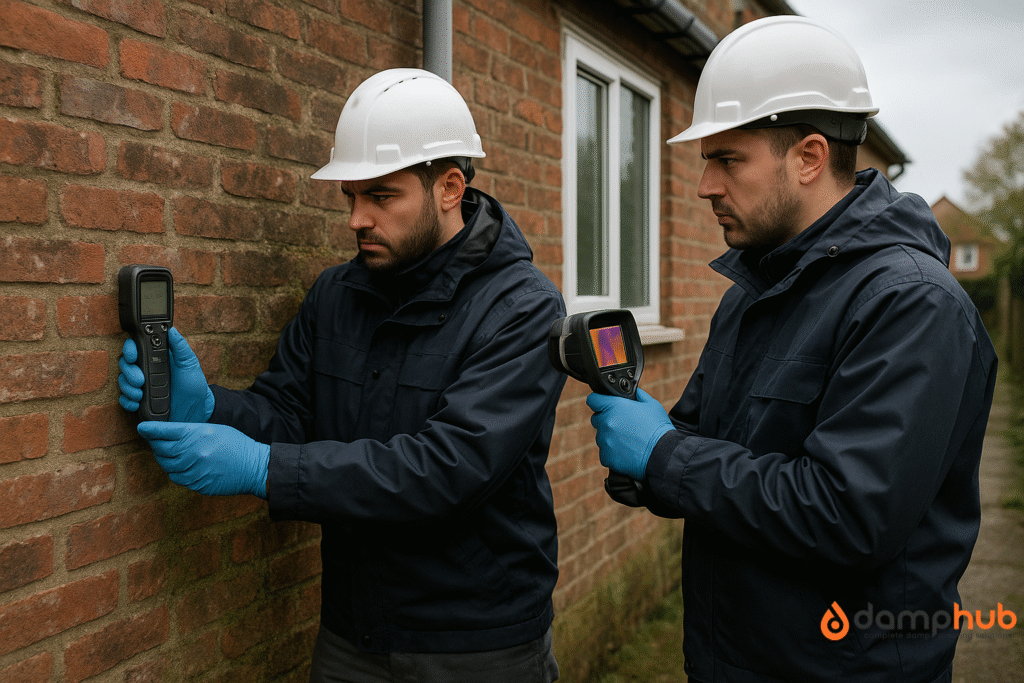
What Do Surveyors Use to Check for Damp?
To support their assessment, surveyors use a variety of tools that measure moisture, temperature, and humidity.
Each tool provides a piece of the puzzle, helping to confirm or rule out possible causes.
- Moisture meters – These handheld devices measure the surface and sub-surface moisture content in walls, floors, and timbers. They help locate areas with abnormal readings.
- Thermal imaging cameras – These detect temperature differences across surfaces. Damp areas often appear cooler than their surroundings, making them visible through thermal scans.
- Hygrometers – Used to assess the relative humidity and dew point inside a property. This is crucial for understanding condensation risks.
- Calcium carbide (“speedy”) test – A chemical method that accurately measures the moisture content in masonry by analysing a sample taken from the wall.
- Salt testing kits – These are used to identify salts commonly associated with rising damp. Their presence can confirm long-term or historic damp issues.
Rather than relying on one device, a good surveyor combines these tools with expert judgment and a deep understanding of building construction to deliver an accurate diagnosis.
👉 Must read: How to Hire an Independent Damp Specialist in London
Why Avoid Free Damp Surveys
Free damp surveys might seem like a bargain — especially if you’re already worried about repair costs. But in most cases, they’re not truly independent. These surveys are typically carried out by companies that sell damp-proofing treatments, which means their “diagnosis” may be influenced by what they want to sell you.
Here’s why relying on a free survey can be risky:
- Biased findings – The goal is often to justify selling expensive work, not to diagnose the real issue.
- Lack of thoroughness – Many free surveys involve little more than a quick moisture meter reading.
- No detailed report – You may get a quote, but rarely a proper survey document with findings and recommendations.
- Wrong treatments – Misdiagnosed damp often leads to unnecessary tanking, injections, or plasterwork — none of which fix the actual cause.
If you want real answers, not a sales pitch, a paid, independent damp survey is far more reliable.
Free vs Paid Damp Surveys: What’s the Difference?
| Often, just a moisture meter | Free Damp Survey | Paid Independent Damp Survey |
|---|---|---|
| Purpose | Promote damp-proofing work | Provide objective diagnosis and advice |
| Who conducts it? | Sales rep from a treatment company | Qualified independent surveyor |
| Method used | Often just a moisture meter | Visual checks, tools, testing, full context |
| Written report | Rarely provided | Yes, includes findings and recommendations |
| Unbiased advice | No – may be tied to sales targets | Yes – no products or services to sell |
| Legal or mortgage value | Usually not accepted | Often accepted as supporting evidence |
| Cost | “Free” — but often leads to expensive work | Often, just a moisture meter |
How Do I Prepare for a Damp Survey?
To ensure the surveyor can do a thorough job, there are a few steps you can take.
- Clear access to external and internal walls, particularly in affected areas.
- Ventilate rooms normally for a day or two beforehand to reflect true living conditions.
- Provide background info – including previous damp treatments, leaks, or refurbishments.
Avoid masking issues – don’t repaint or clean walls just before the survey.
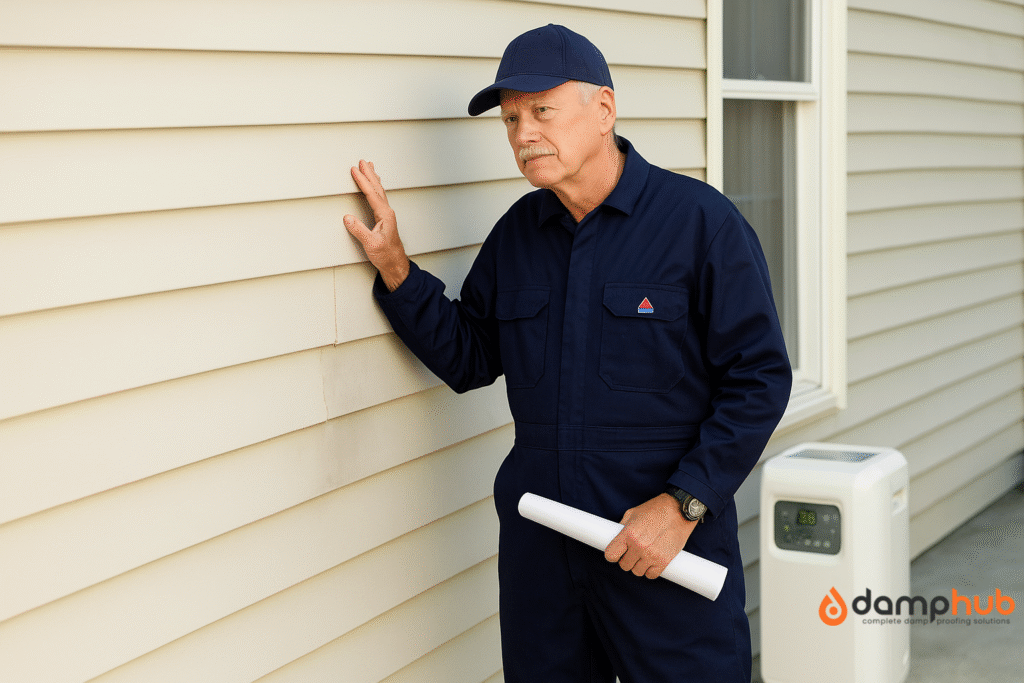
What Should a Proper Damp Survey Include?
Not all surveys are created equal. A proper independent damp survey should give you clear, useful answers — not just vague readings.
Here’s what a good one includes:
- Full visual inspection inside and out
- Moisture meter readings across key areas
- Salt testing, especially where rising damp is suspected
- Ventilation assessment, particularly in bathrooms and kitchens
- Inspection of external features like gutters, drains, render, and pointing
- Written report with photographs, diagnosis, and recommended next steps
- Clear identification of the type of damp (e.g., condensation vs penetrating)
- No sales pitch or attempt to sell treatments
If your survey lacks these, it’s not worth your money.
How to Choose the Best Damp Surveyor
Choosing the right surveyor can make all the difference — here’s how to get it right:
- Go independent – Avoid companies that also sell damp-proofing work
- Look for qualifications – a Certified Surveyor in Remedial Treatment (CSRT) or similar is a good sign
- Check reviews – Look beyond testimonials on their website
- Ask for a sample report – A good surveyor will show you the level of detail to expect
- Clarify the cost upfront – Make sure the fee covers a written report
Make sure they inspect thoroughly – Including outside walls, drainage, and ventilation
👉 Must read: 10 Best Damp Survey Companies in London
A good surveyor focuses on diagnosis, not repairs, and gives you facts you can trust.

Final Thoughts: Is It Worth Paying for a Damp Survey?
In most situations, a paid damp survey is absolutely worth the investment, especially when carried out by an independent, qualified specialist.
Whether you’re:
- Buying a home and want to avoid future repair bills
- Selling and hoping for a smoother transaction
- Managing a rental property and need to meet legal obligations
…an expert damp survey provides clarity, protects your interests, and ensures the right steps are taken.
Is It Worth Paying for a Damp Survey? Common Questions Answered
What happens if damp is found on a survey?
If damp is identified, the surveyor will detail the type—such as rising damp, condensation, or penetrating damp—and its source. The report outlines the severity, the areas affected, and the repairs needed.
In severe cases, the survey may uncover structural risks, prompting urgent intervention. The goal is to prevent further damage, health hazards, and high repair costs.
Who pays for damp surveys?
Payment usually falls to the person requesting the inspection. Property owners often commission damp surveys to investigate visible signs or resolve tenant complaints.
Buyers may request one during the purchase process to avoid hidden defects. In rental properties, landlords are typically responsible if damp affects habitability or health.
How much do damp surveyors cost?
A professional damp survey typically costs:
– £150–£250 for small flats
– £300–£500 for standard homes
– £600+ for large or complex properties
Costs vary based on location and the depth of inspection.
Independent surveyors often charge more than “free” surveys from treatment companies, but they provide impartial advice without sales pressure.
Who carries out damp surveys?
Qualified damp surveyors perform these inspections.
Reputable professionals often hold certifications such as CSRT (Certified Surveyor in Remedial Treatment) or are members of trade bodies like the Property Care Association (PCA).
Independent surveyors are preferred for unbiased assessments, especially during property transactions.
What do surveyors use to check for damp?
Surveyors rely on several tools:
– Moisture meters to measure damp levels in walls or floors
– Thermal imaging cameras to detect cold, damp spots
– Salt analysis to confirm rising damp
– Hygrometers to check air humidity
Combined with visual checks and experience, these tools ensure accurate diagnosis.
What to expect from a damp survey?
Expect a full property assessment using moisture detection tools. The surveyor inspects visible damage, takes readings, and identifies the type of damp present.
Afterward, you’ll receive a written report that explains the findings, outlines recommended treatments, and includes estimated repair costs. Good surveyors also explain their observations during the visit.
What will a surveyor check?
A damp surveyor inspects both interior and exterior areas. Inside, they look for mould, flaking plaster, bubbling paint, and musty smells.
Outside, they check gutters, brickwork, downpipes, and drainage.
Using meters and cameras, they confirm if moisture is surface-level or deeper within the structure. Ventilation and insulation are also assessed.
How is a damp test done?
Damp testing starts with a visual inspection, followed by moisture meter readings on walls, ceilings, and floors.
If rising damp is suspected, salt tests may be done to identify mineral deposits. Thermal imaging is used to find hidden damp.
Some cases require core samples or invasive testing for accurate results.
How do you know if damp is serious?
Serious damp shows through black mould, rotting timber, crumbling plaster, or a persistent musty odour. It can damage structures and worsen respiratory conditions.
If left untreated, it may lead to dry rot or costly repairs. A professional damp survey confirms how widespread the problem is and what urgent steps are needed.
What must be considered a damp location?
A damp location is any space prone to excess moisture, including basements, bathrooms, utility rooms, or poorly ventilated corners.
Areas with high humidity, poor drainage, leaky plumbing, or external walls exposed to rain are also high-risk. These spaces require proper ventilation and regular maintenance to prevent damp buildup.



